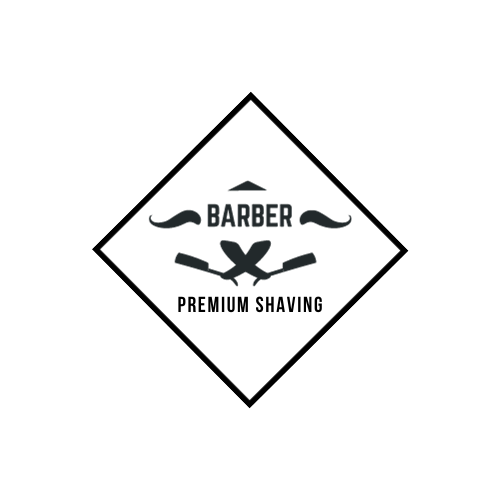Looking to up your shaving game? Look no further! In this handy guide, we’ll walk you through everything you need to know about choosing the perfect shaving brush. From understanding the different types of brushes to finding the right bristle material for your skin, we’ve got you covered. So say goodbye to irritating shaves and say hello to a smoother, more enjoyable grooming routine. Let’s dive in!
Understanding Shaving Brushes
Shaving brushes play a crucial role in achieving a smooth and comfortable shave. They help to create a rich lather, lift the hairs, and exfoliate the skin. With so many options available, it’s important to understand the different types and materials used in shaving brushes, as well as the various factors to consider when choosing the right one for you.
Types of Shaving Brushes
There are several types of shaving brushes available on the market, each with its own unique characteristics and benefits. The most common types include badger hair brushes, boar hair brushes, synthetic brushes, and horse hair brushes.
1. Badger Hair Brushes
Badger hair brushes are known for their exceptional water retention and luxurious feel on the skin. They are available in various grades, including pure badger, best badger, super badger, and silver tip badger. Pure badger brushes are a great entry-level option, while silver tip badger brushes are considered the highest quality.
2. Boar Hair Brushes
Boar hair brushes are known for their stiffness, which makes them ideal for exfoliating the skin. They are an affordable option and are often preferred by those who enjoy a more traditional shaving experience. Boar hair brushes require a break-in period to soften the bristles before they reach their full potential.
3. Synthetic Brushes
Synthetic brushes have gained popularity in recent years due to their cruelty-free nature and excellent performance. They are often made from high-quality synthetic materials that mimic the properties of natural hair brushes. Synthetic brushes offer fantastic water retention, softness, and consistency, making them a great choice for vegans or those with allergies.
4. Horse Hair Brushes
Horse hair brushes provide a unique combination of softness and firmness, offering a comfortable and efficient shaving experience. They are typically made from horse mane or tail hair and are known for their excellent water retention and ability to create a rich lather.
Materials Used in Shaving Brushes
Shaving brushes are made from a variety of materials, each with its own unique characteristics and benefits.
1. Natural Materials
Natural materials such as badger hair, boar hair, and horse hair are often used in shaving brushes. These materials provide excellent water retention and durability, ensuring that your brush will last for years to come.
2. Synthetic Materials
Synthetic materials, such as nylon or polyester, are commonly used in synthetic brushes. These materials offer fantastic water retention, softness, and consistency. Synthetic brushes are also more resistant to bacteria and easier to clean than natural hair brushes.
Considerations for Choosing a Shaving Brush
When selecting a shaving brush, there are several factors to consider to ensure that you choose the right one for your needs.
1. Bristle Type
The type of bristles used in a shaving brush will greatly impact its performance. Consider the level of softness or stiffness you prefer and choose a bristle type accordingly.
2. Handle Design and Material
The design and material of the handle determine the overall feel and grip of the brush. Traditional handles offer a classic look and are often made from materials such as wood, while modern handles may be made from plastic or metal. Choose a handle that feels comfortable in your hand and matches your personal style.
3. Knot Size
The knot size refers to the diameter of the brush at the base of the bristles. A larger knot size will hold more lather, while a smaller knot size offers more precision. Consider your personal shaving preferences when choosing the knot size.
4. Loft Height
The loft height is the length of the bristles from the base to the tip. A higher loft height will create a softer feel on the skin, while a shorter loft height offers more stiffness. Consider your desired level of exfoliation and choose accordingly.
5. Handle Length
The handle length determines the overall balance and maneuverability of the brush. A longer handle may be preferred for those with larger hands, while a shorter handle offers more control. Choose a handle length that feels comfortable and allows for easy use.
6. Water Retention
Consider the water retention capabilities of the brush. Different bristle types and materials will retain water to varying degrees, affecting the lathering process.
7. Softness and Stiffness of Bristles
The softness and stiffness of the bristles determine the overall feel on the skin and the exfoliating properties of the brush. Consider your preference and choose a bristle type accordingly.
8. Longevity
Consider the durability and longevity of the brush. Natural hair brushes, such as badger or boar hair, are known for their durability and can last for many years with proper care.
9. Price Range
Lastly, consider your budget when choosing a shaving brush. There are options available in various price ranges, so it’s important to find a brush that offers the right balance of quality and affordability for you.
By considering these factors and understanding the different types and materials used in shaving brushes, you can confidently choose the perfect shaving brush that will enhance your shaving routine for years to come. Remember, finding the right shaving brush is a personal journey, and ultimately, it’s about finding one that feels comfortable, performs well, and suits your individual preferences. Happy shaving!
